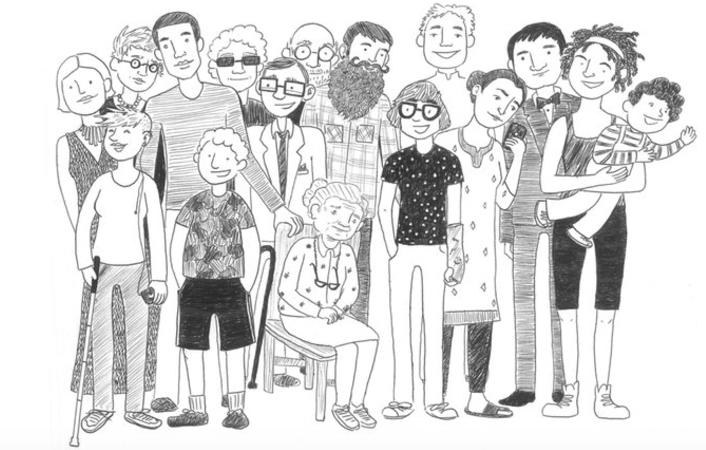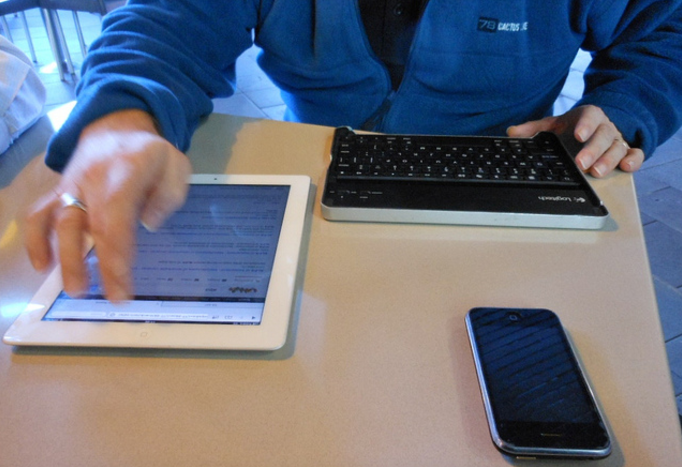Have you considered accessibility in your app design?
Unfortunately, accessibility is not talked about very often when it comes to designing and creating apps, yet it is an important consideration to make. Why? Accessibility means the inclusion of those who may not be able to fully enjoy your app as others have due to some kind of impairment or disability.
As you’ll discover, this could actually cover a significant population of app users, many of whom are probably within your own client base. Accessibility should absolutely be not only on the table, but planned and tested for. Here’s why:
What Is Accessibility?
In short, accessibility means that users of all abilities should be able to successfully navigate and understand your user interface. Here’s what Google’s Material Design has to say on the matter:
“A well-designed product is accessible to users of all abilities, including those with low vision, blindness, hearing impairments, cognitive impairments, or motor impairments. Improving your product’s accessibility enhances the usability for all users. It’s also the right thing to do.”
It’s the right thing to do and, according to statistics, will have an impact on significant segments of the population. For example:
“One billion people, or 15% of the world’s population, experience some form of disability. One-fifth of the estimated global total, or between 110 million and 190 million people, experience significant disabilities.” (World Bank)
If you’re curious, there will be research readily available to show you how many people are affected in the population your particular app serves, just check out resources such as censuses for individual countries. The World Bank statistic above is representative, although numbers are higher in developing populations. The bottom line is, designing for accessibility can help you to create a versatile app which has better overall reach.
Resources on Accessibility
First of all, when designing an app with usability in mind, the app platforms have produced their own guidelines for designers to follow. You can take a look at Apple’s Development Resources and Android’s Building Accessibility Services Guide. Smaller platforms also have resources available.
The original authorities on accessibility began by advocating for websites. These include Web Accessibility Initiative (W3C) and The University of Utah’s WebAIM. These are also helpful resources for designers, particularly if you need to keep your website in mind too.
Principles of Accessibility
There are some basic principles which hold true across most accessibility guidelines you will find. The idea is that you’re doing what you can to design for everyone — a diverse set of users with varying abilities.

Source: Salesforce on Medium
Here are some of the commonly-used principles of accessible design:
Provide Flexibility
People of diverse abilities need choices as to how the tasks they need to perform get accomplished. A good example of this is found in Apple’s guidelines: “Although color can greatly enhance a user interface, make sure it is not the only source of information. A color-blind user may not be able to distinguish between two objects that differ only in color.” So in this case, you might use words as well as colors, or allow the user to customize their settings in some way.
When it comes to flexibility, you should also consider basics such as whether a user is right or left-handed, or even if they’re using adaptive technologies to aid their use of the app (for example, augmentative communication).
Keep it Simple
As a general rule, apps should operate how users would generally expect them to on the given platform. You should eliminate any unnecessary complexity or actions which are not a “usual” fit for the platform. This might include unusual combinations of swipes or taps in order to accomplish a task. Different is good in apps, but not too different.
Provide Fail-Safes
If it is possible for users to reset or lose any data or state in the app which is important to them, then there should be fail-safes built in wherever possible so that they are adequately warned before doing so. These might include features such as warning messages requiring the user to take further action to continue.
Don’t Make Response Requirements Too Quick
How annoying is it if you don’t get to act on a message in time within an app? When thinking of people with all abilities, remember to allow for any need for extra time to respond.
Avoid Rapid Blinking or Flashing Features
There are standard guidelines to help avoid triggering seizures or other ill-effects from rapidly blinking screens. Avoid the frequency range of 2 to 55 Hz to stay within safe ranges.
Ensure Sufficient Contrast
Have you ever tried to read yellow text against a white background? This is an extreme example of what can make text virtually illegible, but there are other guidelines to pay attention to. For example, if the size of the text is small and the color is a pale grey, this will be difficult to read too. Aim for easy-to-read fonts, font sizes and contrasting letter and background colors.
Testing for Accessibility
Accessibility testing should be part of your overall user experience testing prior to releasing a new app. Obviously, there are a number of different abilities to consider with your testing, including the following:
- Blindness or partially sighted.
- Color blindness.
- Cognitive issues such as dyslexia.
- Limited mobility such as movement in hands. Arthritis in joints is an example.
- Varying hand sizes. For example, someone with large fingers will have difficulty with tiny buttons.
How to test accessibility
There are numerous tools available to help with accessibility testing which you can use yourself, but of course it’s always a good idea to test on humans too. Here are some of the basic components of testing accessibility:
- Screen Readers – There are many free tools available for screen reader testing on mobile. The aim is to test how the app truly appears and operates for users. Screen reading tends to be the most time-consuming of any accessibility testing because you need to run through many different scenarios, such as different gestures for commands. The general idea is to test that everything works and is displayed in a meaningful way.
- Color ratio testing – These are analysis tools which are usually used on a desktop. Their purpose is to ensure that you have recommended standards of clarity and contrast. Most testers recommend using screenshots from a phone and uploading these as this ensures that you are testing as the app actually appears.
- Readability testing – How complicated is your text? You want users to be able to quickly and easily understand it, which is why readability is an important test. The other part to this is ensuring the text itself is easy to read against the background it sits on.
- Zooming the app – Someone who is visually impaired may need to zoom in on your app, but how easy is it for them to do so? Make sure this is part of testing.
- App navigation – Navigation should be logical and structured.

Photo credit: mikecogh via VisualHunt
How Accessible Is Your App?
Overall, accessibility should be an important consideration for all app owners and designers. If you’re not creating an app with various abilities in mind, then users are missing out on your app and you’re missing out on a potentially large number of users.
Follow some good principles of design for accessibility when developing your app — these provide a solid basis to work from. Generally speaking, there are basic ideas which all platforms agree upon that are centered in simplicity for the user.
Lastly, be sure to include testing for accessibility as a subset of your regular usability testing. The only way to be sure you’re hitting the mark is to test and preferably get confirmation from real users.
Koombea creates accessible apps for all abilities. Talk to us today about your development needs.
